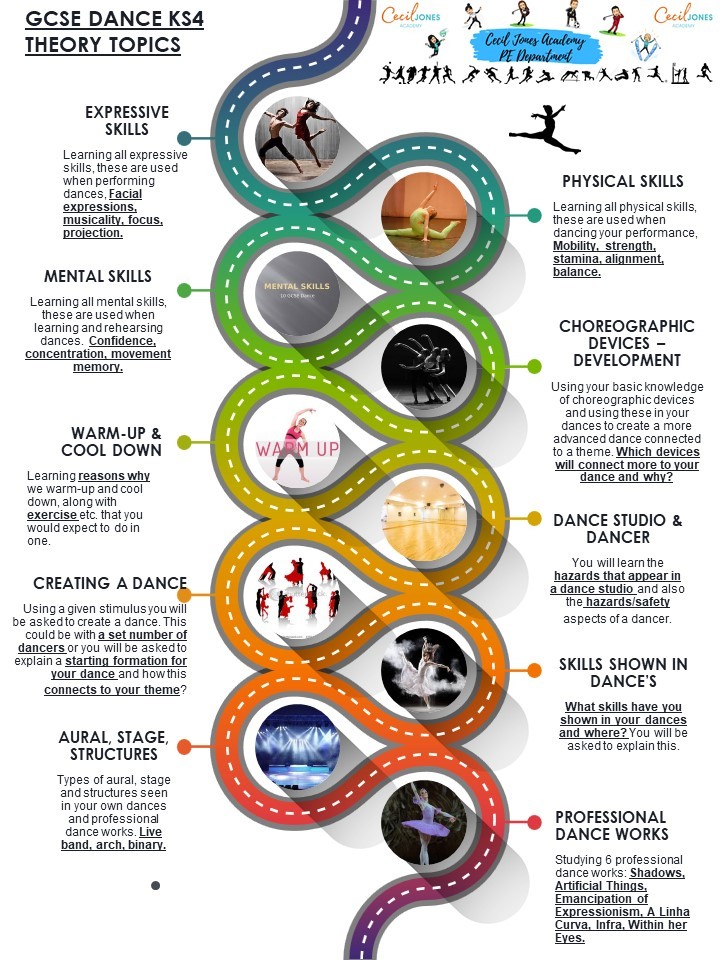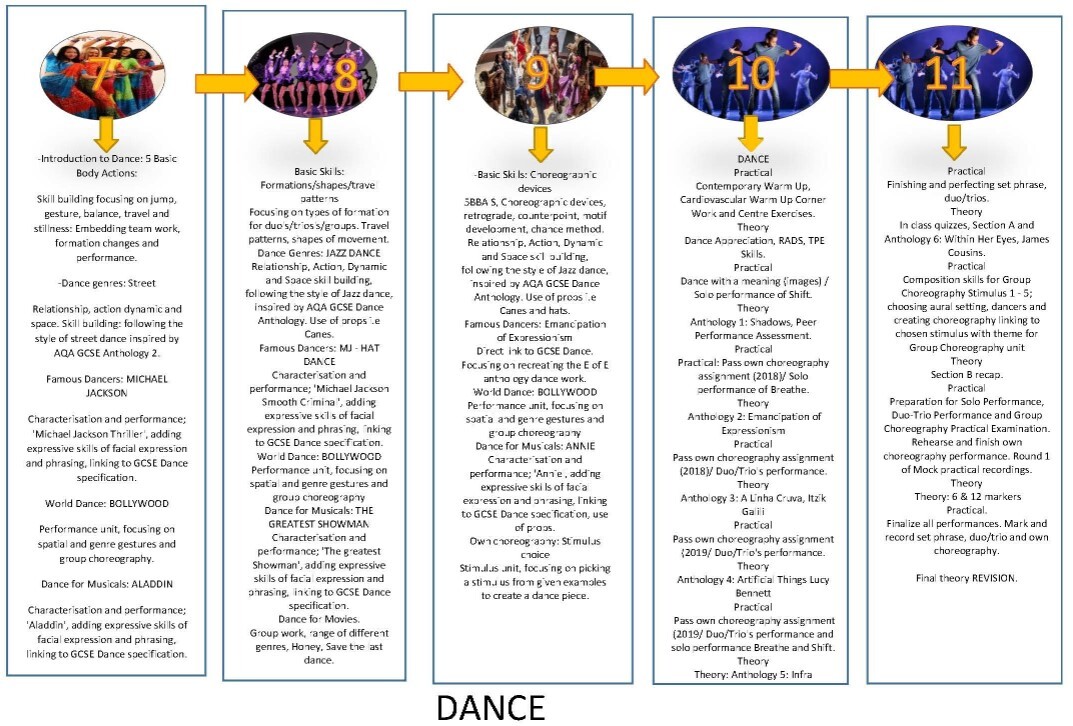- Home
- Secondary
- Subject Information
Dance
Back
Introduction
Dance is a key part of the curriculum at Cecil Jones Academy and is a vibrant, ever changing subject, which enables our students to develop their communication, problem solving and confidence, as well as maturing their memory, creativity and initiative.
Dance is taught at both Key Stage 3 and 4 at Cecil Jones Academy. At KS3 it is delivered within the Physical Education curriculum and increases students’ knowledge on physical, technical and expressive skills, through practical activity.
General Outcomes and Objectives of Dance
- Promotion of fitness, healthy lifestyle, teamwork and creativity
- Develops independent learning
- Allows for critical and reflective thinking
- Matures students’ understanding of a range of dance styles through performance, creation and appreciation
- Advances physical, technical and expressive skills, which you are able to communicate choreographic intention and individuality as a performer
We expect
- All students to comply with changing expectations, both male and female, getting changed into their dance kit, in less than 5 minutes
- All students to wear the Cecil Jones Academy PE uniform
- All students to tie up their hair
- All students to rehearse and perform bare foot
- If a non-participant, students should bring in a note that is dated and signed by a parent/carer.
- All non-participants are expected to bring in their kit and will complete a non-participant worksheet.
- All non-participants are expected to catch up on any work missed.
KS4
GCSE Dance helps students to develop technical and expressive skills as well as knowledge and understanding of dance through performance, choreography and critical appreciation.
The course combines practical and written skills with a focus on choreography and performance, as well as analysis and criticism of dance.
The subject content details the knowledge, understanding and skills that students are expected to learn during the course of study. This is set out below in three core areas of dance: performance, choreography and appreciation.
- Component 1A: Performance - Students must develop and apply the following knowledge, understanding and skills to perform dance as a soloist for approximately one minute and in a duet/trio for a minimum of three minutes
- Component 1B: Choreography - Students must learn how to respond creatively to an externally set stimulus, to choreograph their own complete dance. The dance created must be either: • a solo dance of a minimum of two minutes and a maximum of two and a half minutes or • a group dance of a minimum of three minutes and a maximum of three and a half minutes for two to five dancers.
- Component 2: Dance Appreciation - Through written communication and use of appropriate terminology, students must be able to critically analyse, interpret and evaluate their own work in performance and choreography and demonstrate their knowledge and understanding of professional practice in the six set works in the GCSE Dance Anthology. This is the end of year 11 written exam.

Visual Curriculum Map



